Abstract
Nonpigmented multiply drug-resistant Serratia marcescens caused an extensive outbreak of infection at the Nashville Veterans Administration Hospital. Isolates were of one serotype resistant to all currently available antimicrobial agents for therapy of systemic infections except for occasional susceptibility to chloramphenicol and kanamycin. Frequently strains were susceptible to nalidixic acid, and all were susceptible to amikacin (BB-K8). Drug-resistant strains caused 130 infections, 12 bacteremias, and 7 infection-associated deaths. Combinations of antimicrobial agents were evaluated for synergism against Serratia strains from infected patients. “Checkerboard” isobolograms indicated in vitro static synergism between sulfamethoxazole, trimethoprim, and polymyxin (STP). Killing curves using clinically achievable concentrations of STP verified the bactericidal effect of STP against these strains. In a daily dosage of 1,600 mg of sulfamethoxazole and 320 mg of trimethoprim orally in combination with 100 to 300 mg of colistimethate parenterally, serum cidal levels at 1:8 or greater were achieved in five of six patients. Clinical improvement or microbiological cure was effected in four of six patients. STP may be potentially useful for selected Serratia infections for which single agents are unavailable or ineffective.
Full text
PDF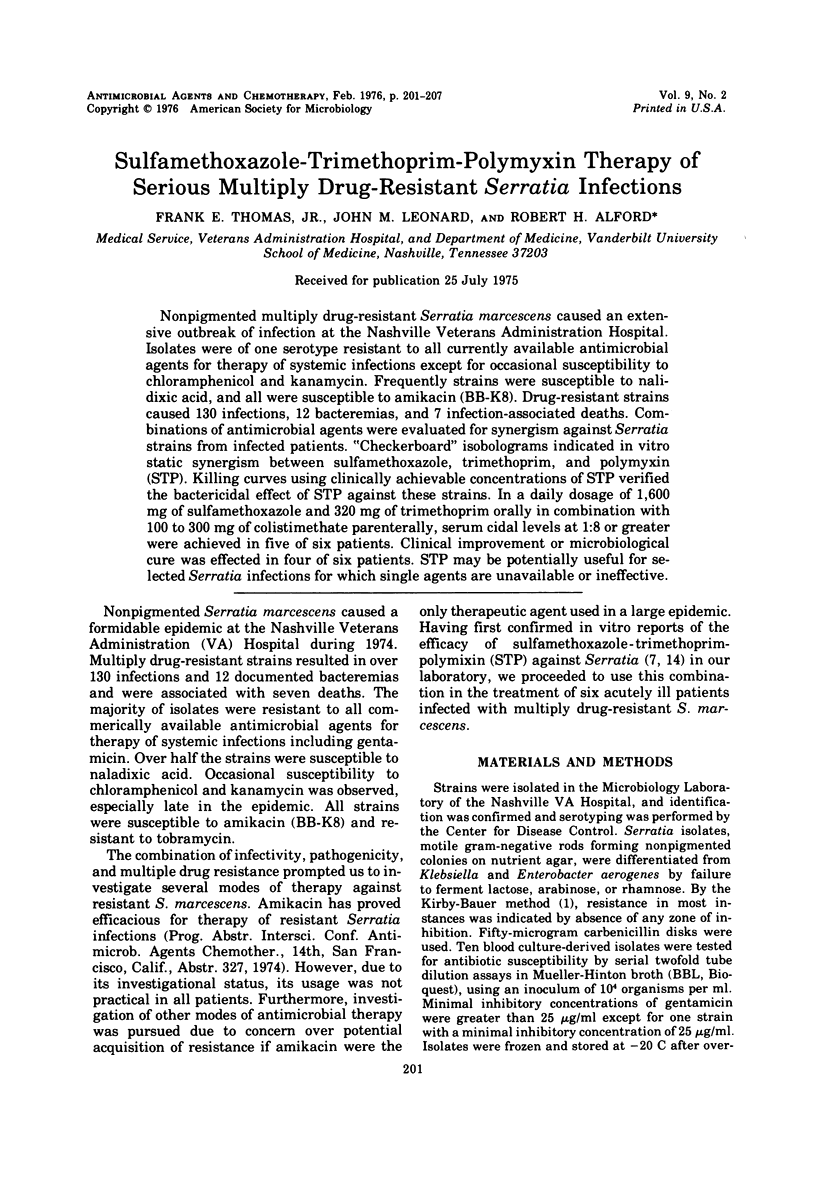
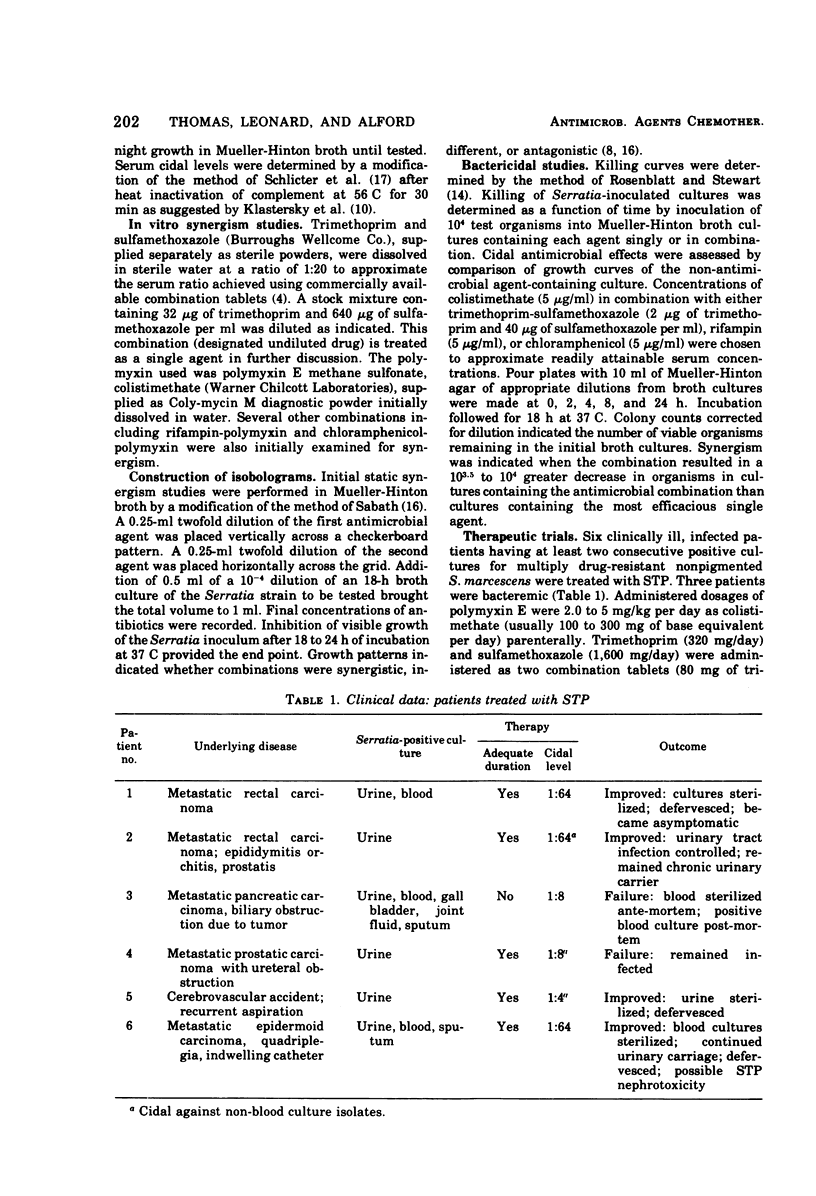
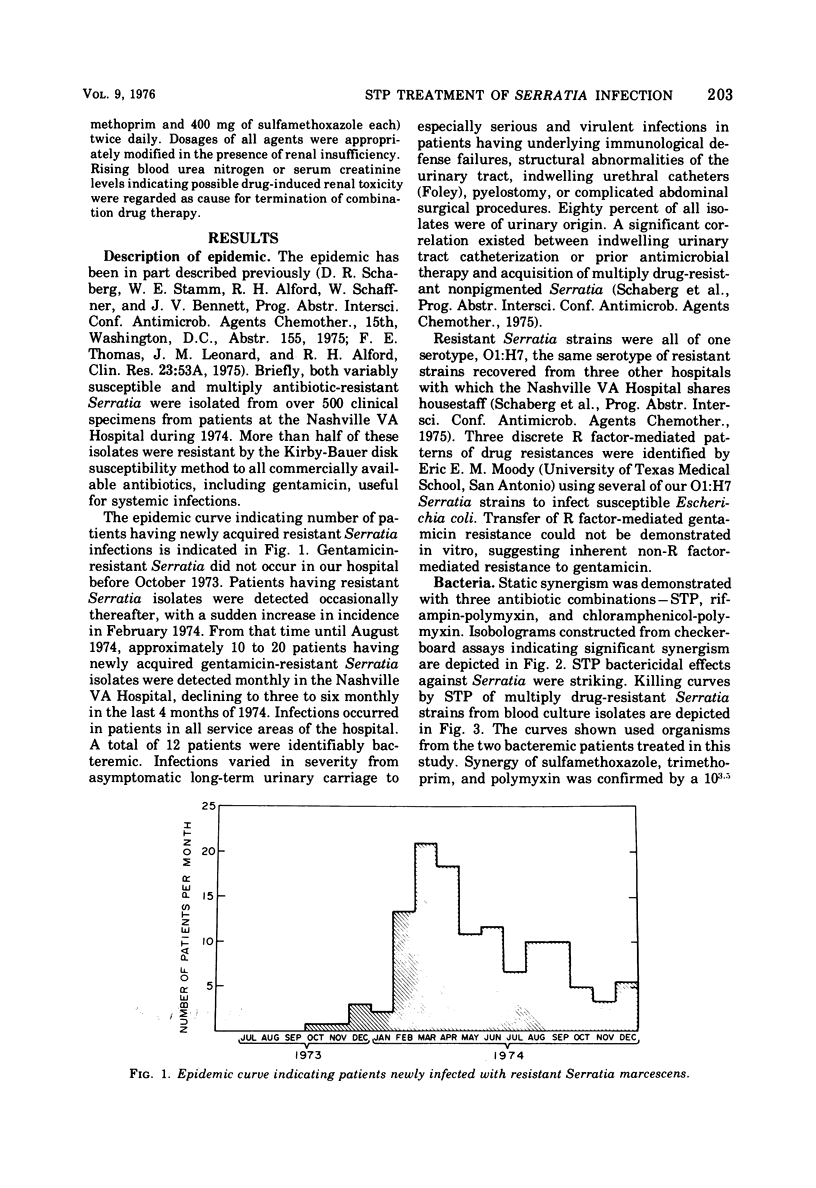
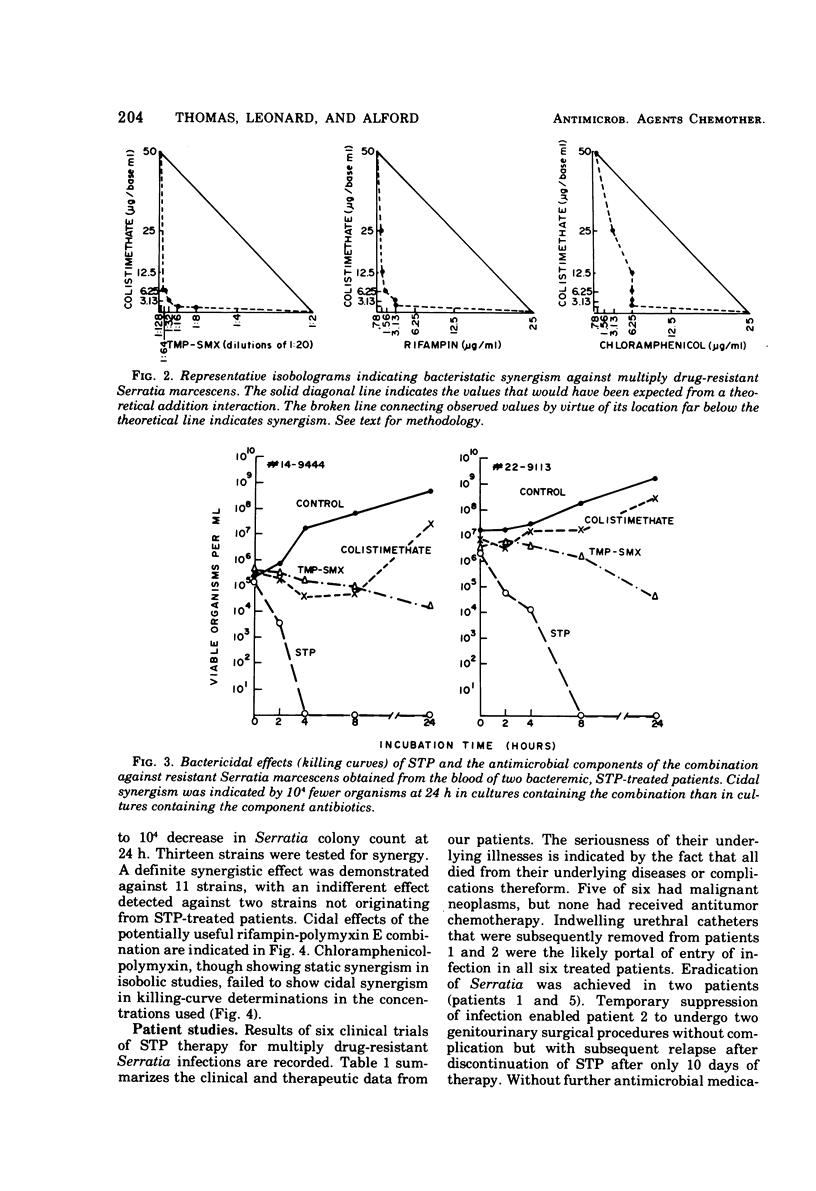
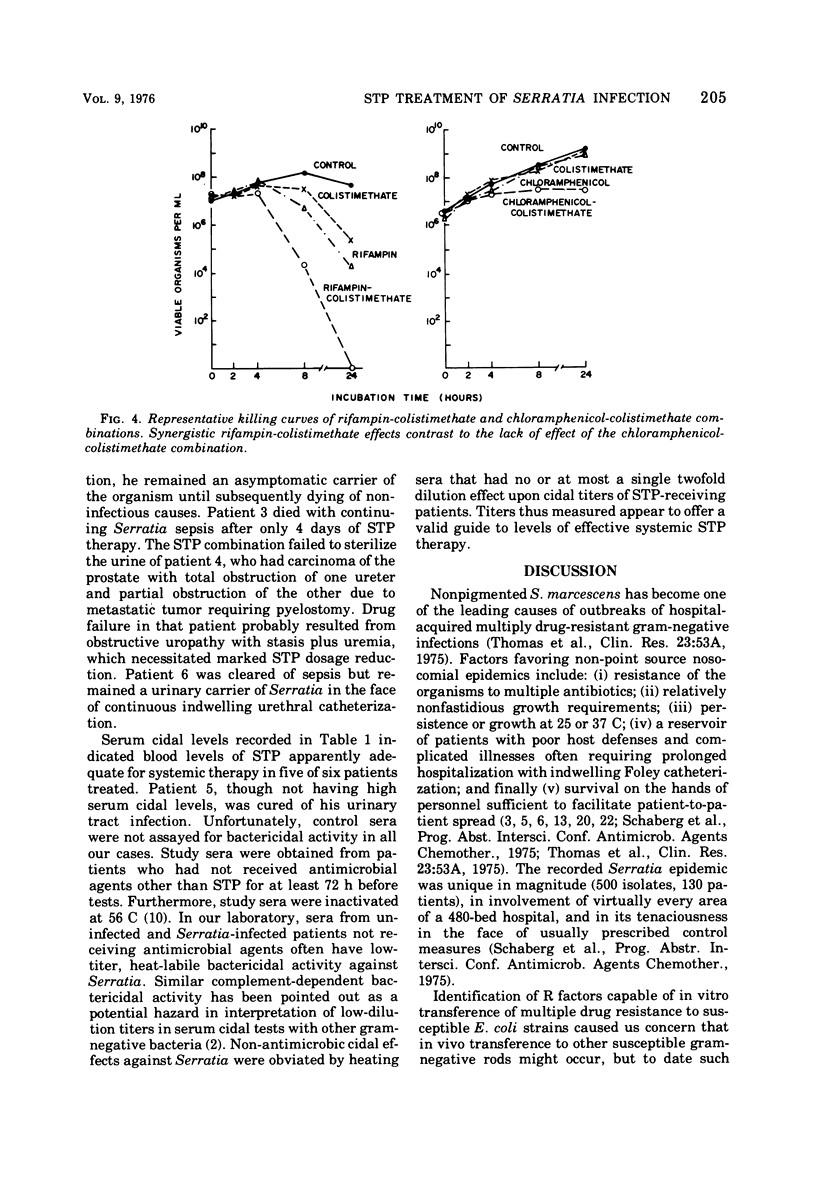
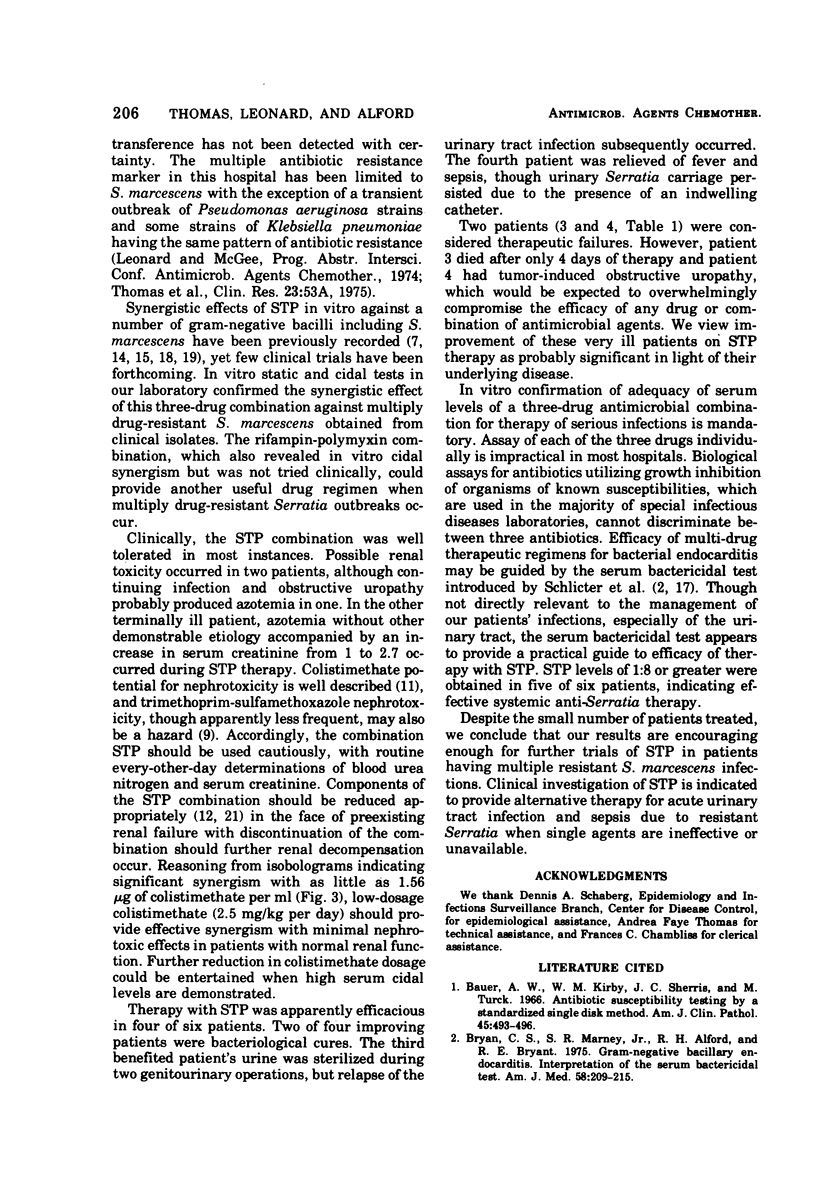
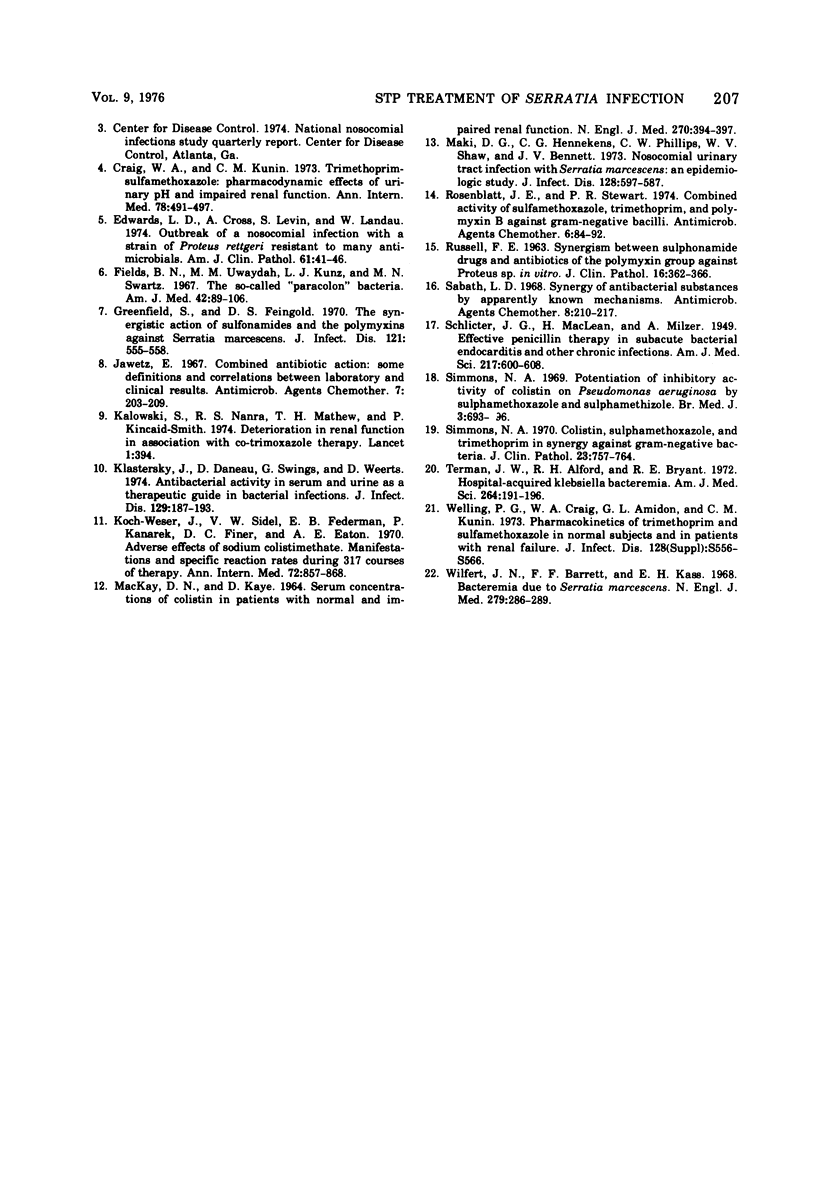
Selected References
These references are in PubMed. This may not be the complete list of references from this article.
- Bauer A. W., Kirby W. M., Sherris J. C., Turck M. Antibiotic susceptibility testing by a standardized single disk method. Am J Clin Pathol. 1966 Apr;45(4):493–496. [PubMed] [Google Scholar]
- Bryan C. S., Marney S. R., Jr, Alford R. H., Bryant R. E. Gram-negative bacillary endocarditis. Interpretation of the serum bactericial test. Am J Med. 1975 Feb;58(2):209–215. doi: 10.1016/0002-9343(75)90571-9. [DOI] [PubMed] [Google Scholar]
- Craig W. A., Kunin C. M. Trimethoprim-sulfamethoxazole: pharmacodynamic effects of urinary pH and impaired renal function. Studies in humans. Ann Intern Med. 1973 Apr;78(4):491–497. doi: 10.7326/0003-4819-78-4-491. [DOI] [PubMed] [Google Scholar]
- Edwards L. D., Cross A., Levin S., Landau W. Outbreak of a nosocomial infection with a strain of Proteus rettgeri resistant to many antimicrobials. Am J Clin Pathol. 1974 Jan;61(1):41–46. doi: 10.1093/ajcp/61.1.41. [DOI] [PubMed] [Google Scholar]
- Fields B. N., Uwaydah M. M., Kunz L. J., Swartz M. N. The so-called "Paracolon" bacteria. A bacteriologic and clinical reappraisal. Am J Med. 1967 Jan;42(1):89–106. doi: 10.1016/0002-9343(67)90008-3. [DOI] [PubMed] [Google Scholar]
- Greenfield S., Feingold D. S. The synergistic action of the sulfonamides and the polymyxins against Serratia marcescens. J Infect Dis. 1970 May;121(5):555–558. doi: 10.1093/infdis/121.5.555. [DOI] [PubMed] [Google Scholar]
- Jawetz E. Combined antibiotic action: some definitions and correlations between laboratory and clinical results. Antimicrob Agents Chemother (Bethesda) 1967;7:203–209. doi: 10.1128/AAC.7.2.203. [DOI] [PubMed] [Google Scholar]
- Kalowski S., Nanra R. S., Mathew T. H., Kincaid-Smith P. Deterioration in renal function in association with co-trimoxazole therapy. Lancet. 1973 Feb 24;1(7800):394–397. doi: 10.1016/s0140-6736(73)90251-1. [DOI] [PubMed] [Google Scholar]
- Klastersky J., Daneau D., Swings G., Weerts D. Antibacterial activity in serum and urine as a therapeutic guide in bacterial infections. J Infect Dis. 1974 Feb;129(2):187–193. doi: 10.1093/infdis/129.2.187. [DOI] [PubMed] [Google Scholar]
- Koch-Weser J., Sidel V. W., Federman E. B., Kanarek P., Finer D. C., Eaton A. E. Adverse effects of sodium colistimethate. Manifestations and specific reaction rates during 317 courses of therapy. Ann Intern Med. 1970 Jun;72(6):857–868. doi: 10.7326/0003-4819-72-6-857. [DOI] [PubMed] [Google Scholar]
- MACKAY D. N., KAYE D. SERUM CONCENTRATIONS OF COLISTIN IN PATIENTS WITH NORMAL AND IMPAIRED RENAL FUNCTION. N Engl J Med. 1964 Feb 20;270:394–397. doi: 10.1056/NEJM196402202700804. [DOI] [PubMed] [Google Scholar]
- Maki D. G., Hennekens C. G., Phillips C. W., Shaw W. V., Bennett J. V. Nosocomial urinary tract infection with Serratia marcescens: an epidemiologic study. J Infect Dis. 1973 Nov;128(5):579–587. doi: 10.1093/infdis/128.5.579. [DOI] [PubMed] [Google Scholar]
- RUSSELL F. E. SYNERGISM BETWEEN SULPHONAMIDE DRUGS AND ANTIBIOTICS OF THE POLYMYXIN GROUP AGAINST PROTEUS SP. IN VITRO. J Clin Pathol. 1963 Jul;16:362–366. doi: 10.1136/jcp.16.4.362. [DOI] [PMC free article] [PubMed] [Google Scholar]
- Rosenblatt J. E., Stewart P. R. Combined activity of sulfamethoxazole, trimethoprim, and polymyxin B against gram-negative bacilli. Antimicrob Agents Chemother. 1974 Jul;6(1):84–92. doi: 10.1128/aac.6.1.84. [DOI] [PMC free article] [PubMed] [Google Scholar]
- Simmons N. A. Colistin, sulphamethoxazole, and trimethoprim in synergy against Gram-negative bacteria. J Clin Pathol. 1970 Dec;23(9):757–764. doi: 10.1136/jcp.23.9.757. [DOI] [PMC free article] [PubMed] [Google Scholar]
- Simmons N. A. Potentiation of inhibitory activity of colistin on Pseudomonas aeruginosa by sulphamethoxazole and sulphamethizole. Br Med J. 1969 Sep 20;3(5672):693–696. doi: 10.1136/bmj.3.5672.692. [DOI] [PMC free article] [PubMed] [Google Scholar]
- Terman J. W., Alford R. H., Bryant R. E. Hospital-acquired Klebsiella bacteremia. Am J Med Sci. 1972 Sep;264(3):191–196. [PubMed] [Google Scholar]
- Wilfert J. N., Barrett F. F., Kass E. H. Bacteremia due to serratia marcescens. N Engl J Med. 1968 Aug 8;279(6):286–289. doi: 10.1056/NEJM196808082790604. [DOI] [PubMed] [Google Scholar]


